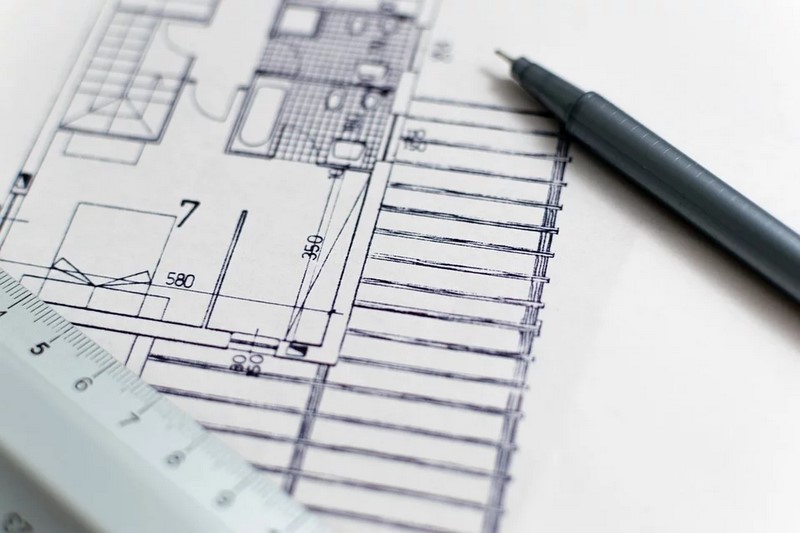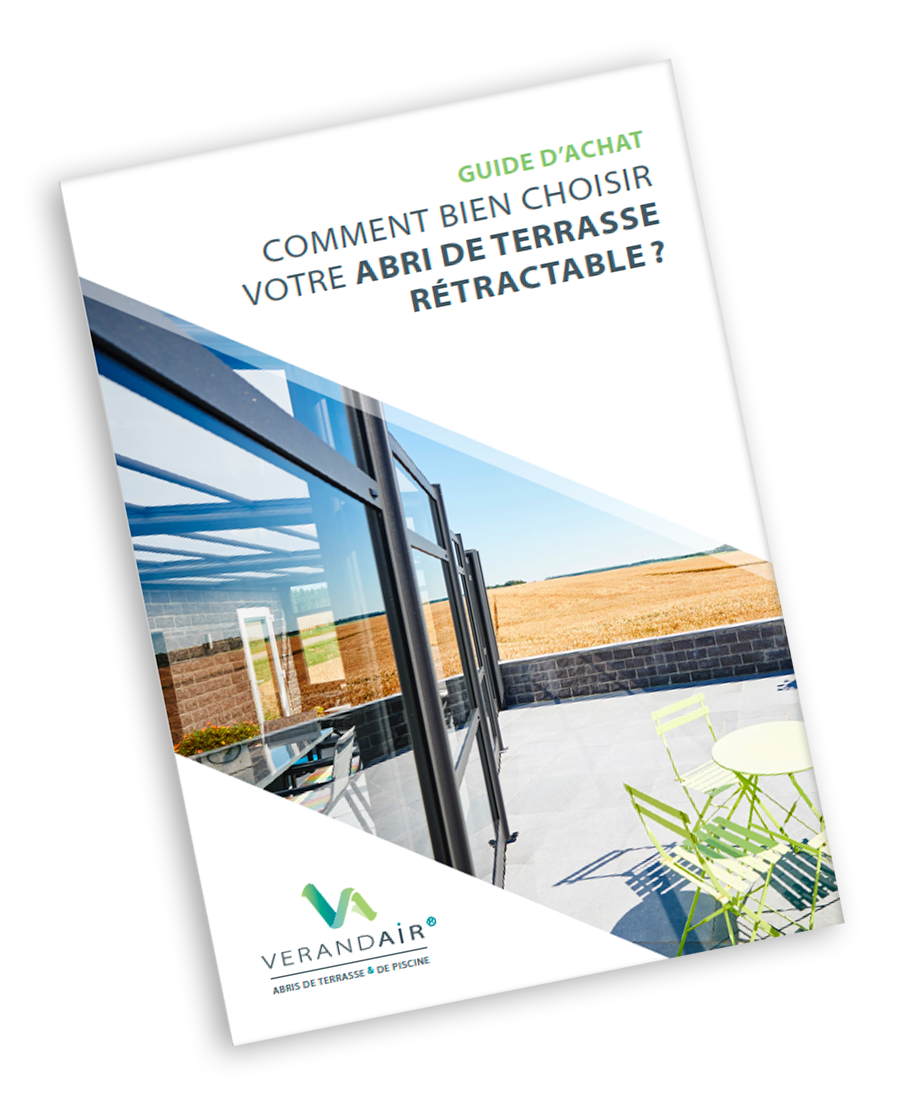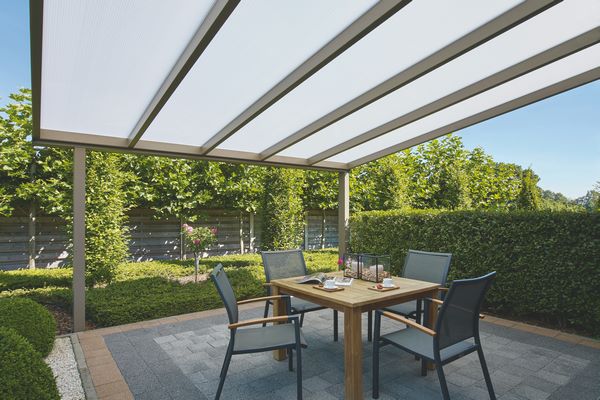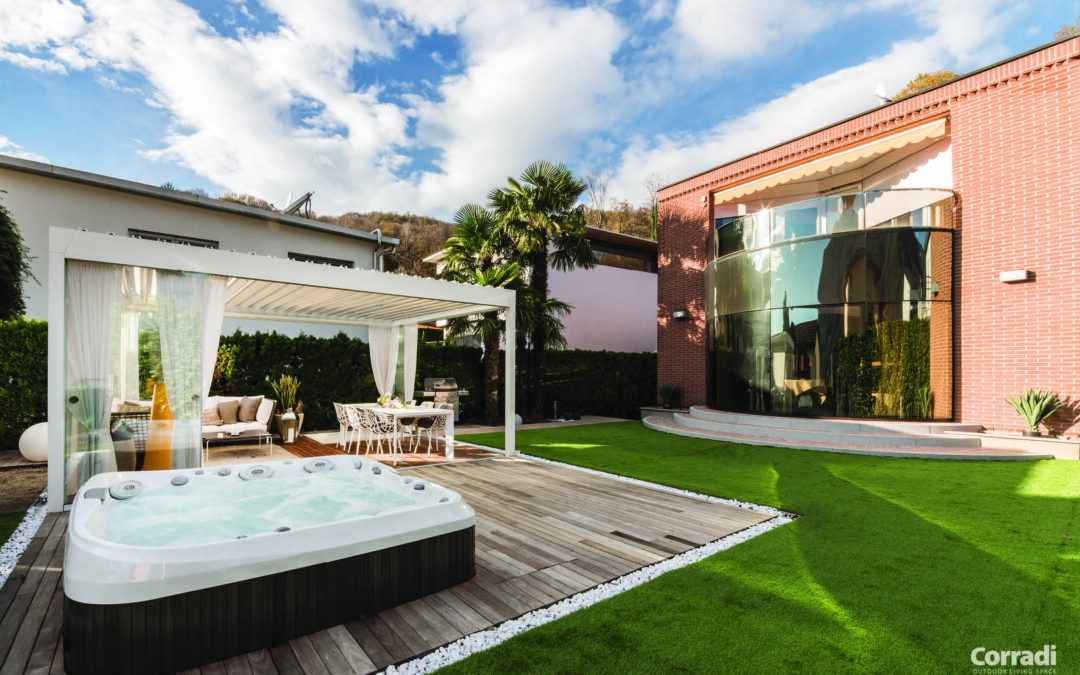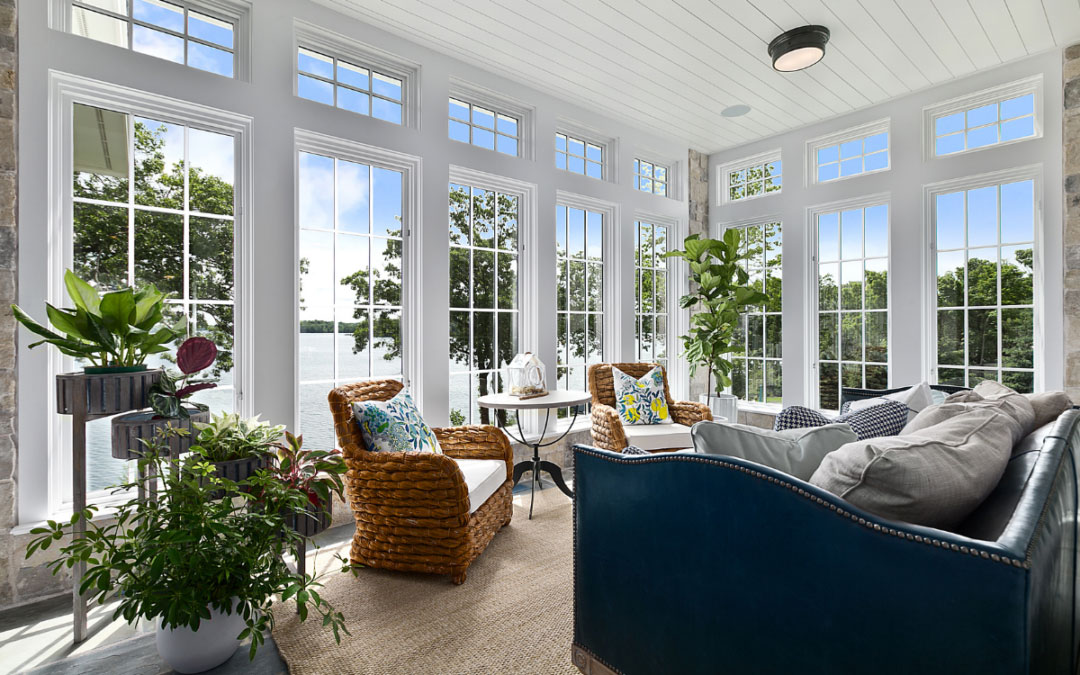Installing a veranda is an attractive idea. This project will take time and energy. Verandair® guides you through the process of building a veranda.
Would you like to extend your home with an extra room, a light-filled space that will bring warmth and conviviality to your home? It’s great to be able to enjoy the sun’s rays, whatever the weather. That’s the promise of the veranda!
However, installing a veranda can be a real headache. Before embarking on the construction of your new home, it is essential to consider a number of points: style, materials, surface area, insulation, acoustic and town-planning standards, etc. To help you in this process, we have compiled the following some important questions to bear in mind when it comes to installing a veranda at home.
What type of veranda?
At Verandair, we offer a range of tailor-made solutions to make the most of the fine weather on your veranda. With
the retractable veranda
retractable veranda, you’ll have a real living space outside your home, while still enjoying the comfort of the interior. Depending on the weather, you can open or close your veranda at your convenience.
If you want a simpler shelter for your terrace,
the pergola
is the ideal solution for you. It’s perfect for enjoying your terrace and garden when the weather’s mild, and protects you from the rain and sun’s rays.
In both cases, you can add sliding glass panels
sliding glass walls
to keep the cold out and the light in.
Do I need a permit to build a veranda?
Whether you’re renovating or building a veranda, there are certain rules to follow. In Wallonia, you don ‘t always need a permit. You can build a veranda using a simplified procedure, provided you meet a few conditions:
- The veranda must be attached to the house, not exceed a total surface area of 40m² and be built at least 2 metres from the two party boundaries.
- The maximum height is 3m under the cornice, 5m at the ridge and 3.2m at the acroterion.
- The veranda must comply with the provisions of the sector plan and the standards of the regional planning guide.
If these standards are not met, you will need to obtain a permit and hire an architect.
In Brussels, the law is simpler: in all cases, you’ll need to apply for a permit to build your veranda. Whatever the case, we recommend that you contact your local town planning department to find out what administrative procedures you need to follow.
What orientation for my veranda?
After this preliminary research, you’ll be able to define your project a little more precisely. A veranda lets you enjoy the sun despite cool temperatures. The question of the veranda’s orientation naturally arises. To define the layout of your veranda, ask yourself the right questions: will the veranda be an extension of a room? Will it be a one-off? Living room or conservatory? Will I be spending a lot of time there? More in the morning or in the evening? In this way, you’ll be able to determine whether it’s best to choose an east, west or south-east, south-west orientation.
In our regions, it’s advisable to install your veranda facing south to benefit from maximum sunlight. However, if the ventilation of your veranda is well thought out, erecting your veranda facing west can be pleasant.
Veranda shape and materials
It’s important to establish the style of veranda you want to build. If you already have an idea of the style, then it will be easier to select its shape and materials. Would you like your veranda to be a direct extension of your home, like a real new room? Or do you see it more as a terrace shelter leaning against your house? Whatever you choose, you’ll need to match it to the style of your home: rustic, classic or modern, for example.
So you can choose the type of roof: pitched, flat, etc. Be careful, though, as in some regions pitched roofs are compulsory.
You’ll also be able to determine whether your veranda will consist entirely of bay windows, or whether you’ll be incorporating opaque panels, as may be the case for the basement.
The choice of materials is also important. While wood-frame or PVC verandas are available, Vérandair has chosen to work exclusively with aluminum to build the structure of its various shelters. Aluminum offers many advantages: it’s strong, hard-wearing and easy to maintain. This ensures a long service life for your veranda. The aluminum structure is also fully customizable, as we you can choose from a range of 2,500 colors, in smooth or structured finishes. There’s something for everyone!
Insulation and heating
In your veranda,insulation is essential to prevent this glass room from being too cold in winter and too hot in summer. In discussion with your veranda builder, you’ll need to focus on glazing (double- or triple-glazed), roof insulation, ventilation, the use of blinds and the heating system. Important elements that add comfort to your veranda.
Have a concrete idea to take the plunge
Of course, depending on your expectations, other questions will come to mind: which model to choose? Which color to choose? What dimensions for my veranda? What type of earthwork should it be built on? Etc. You can ask us any questions you may have. Our Vérandair experts will be happy to help!
We recommend that you visit our showrooms and take a look at our creations to get a concrete idea of what your future patio enclosure could look like.
And don’t hesitate to ask for a quotation to find out all the aspects included in the price of your custom-made extension project. Note that the optimum lead time for installing a veranda is around 4 months. Bear in mind that there is often more demand in spring and autumn, which can lead to longer lead times.
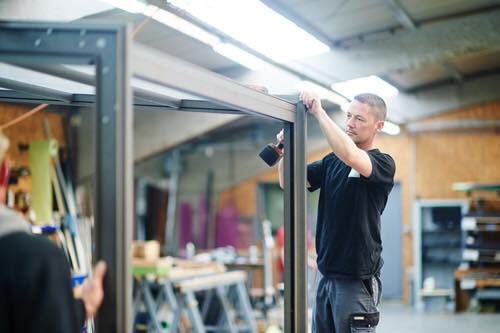
Veranda shape and materials
It’s important to establish
the style of veranda
you want to build. If you already have an idea of the style, then it will be easier to select its shape and materials. Do you want a room that blends in perfectly with the house, a more rustic or modern style,… So you can choose a pitched roof, a flat roof,… In some regions, slopes are imposed. The materials can be different, but aluminum is stronger, more resistant and easier to maintain. What’s more, there’s a choice of 2,500 colors, so you’re sure to find what you’re looking for.
Insulation and heating
In your veranda, insulation is essential to prevent this glass room from being too cold in winter and too hot in summer. In discussion with your veranda builder, you’ll need to focus on glazing, ventilation, the use of blinds and the heating system. Important elements that add comfort to your veranda.
To install a veranda, the optimum lead time is around 4 months. Bear in mind that there is often more demand in spring and autumn, which can lead to longer lead times.
